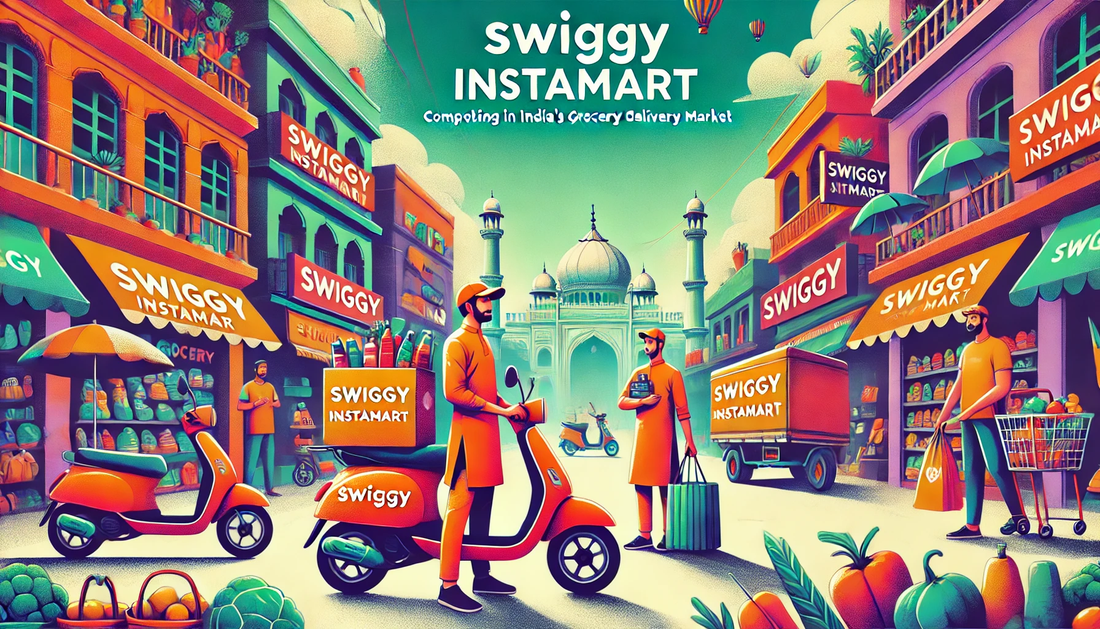Swiggy Instamart, Swiggy's foray into the grocery delivery market, has made significant strides in a highly competitive space.
Their success offers valuable insights for startup founders looking to make their mark in the rapidly evolving world of quick commerce.
From leveraging their existing infrastructure to creating new value propositions for customers, Swiggy Instamart’s strategy is worth studying. Here’s how they’re competing and what startups can learn from their approach.
1. Leveraging Existing Infrastructure
Swiggy Instamart built upon Swiggy’s established network of delivery partners and logistics infrastructure, allowing them to enter the market quickly and efficiently. They didn't have to start from scratch, which gave them a head start.
Takeaway for Startups: Look for ways to leverage existing resources or partnerships when expanding into new markets.
Whether it's logistics, technology, or customer bases, building on what you already have can accelerate growth.
2. Prioritizing Speed and Convenience
Instamart promises grocery delivery in 15 to 30 minutes, catering to customers seeking instant gratification. Speed became their differentiator in a market that was already saturated with grocery delivery services.
Takeaway for Startups: Identify what sets you apart from competitors. Whether it's speed, convenience, or customer experience, find your unique value proposition and focus on delivering that consistently.
3. Offering a Curated Product Selection
Instead of offering a massive inventory like traditional e-grocery platforms, Instamart focuses on a curated selection of fast-moving products. This allows them to optimize inventory management and delivery logistics.
Takeaway for Startups: Sometimes less is more. A curated product offering can help streamline operations and improve the customer experience. Focus on stocking high-demand items and ensure availability to keep customers happy.
4. Building Strategic Partnerships
Swiggy Instamart formed partnerships with local vendors and suppliers to ensure a steady supply of groceries and essentials. This network of suppliers helped them offer a diverse yet reliable inventory to customers.
Takeaway for Startups: Build strategic partnerships with local players who understand the market. This will help you scale quickly while minimizing operational challenges.
5. Leveraging Technology for Operational Efficiency
Instamart uses real-time inventory tracking and AI-powered demand forecasting to ensure that their stock meets customer needs without overstocking. This has helped them maintain operational efficiency and minimize waste.
Takeaway for Startups: Use technology to optimize your operations. Whether it’s AI for demand forecasting or automation for inventory management, invest in tools that can help streamline your processes and reduce inefficiencies.
6. Customer Loyalty Through Membership Programs
Swiggy’s Super membership program, which offers free deliveries and exclusive offers, encourages customer loyalty. This program also extends to Instamart, giving users added incentives to shop frequently.
Takeaway for Startups: Create loyalty programs that offer tangible value to your customers. Membership programs can increase repeat purchases and foster brand loyalty. Make sure to reward your most engaged customers.
7. Expanding Market Reach with Regional Customization
Instamart tailors its product offerings based on regional preferences. By customizing product availability to suit local tastes, they ensure relevance in different markets across India.
Takeaway for Startups: Customize your offerings based on regional or local preferences. Tailoring your product or service to meet the specific needs of different markets can help you gain a competitive edge.
8. Creating a Smooth Customer Experience
Instamart’s app is designed for simplicity, offering a smooth user experience from browsing to checkout. With easy navigation and multiple payment options, the platform makes grocery shopping effortless for customers.
Takeaway for Startups: Prioritize user experience in your app or website design. A smooth and intuitive interface can increase customer satisfaction and conversion rates.
9. Quick Scaling with a Hyperlocal Model
Instamart’s hyperlocal delivery model allows them to serve multiple neighborhoods efficiently. By setting up dark stores (warehouses not open to the public) strategically, they ensure rapid fulfillment and delivery times.
Takeaway for Startups: Consider a hyperlocal approach when scaling your business. By focusing on smaller geographic areas and serving them efficiently, you can gain a foothold in new markets faster.
10. Adapting to Changing Consumer Behaviors
The pandemic changed how people shop for groceries, and Instamart adapted quickly. By offering contactless delivery and maintaining strict safety protocols, they addressed customers' evolving needs and built trust.
Takeaway for Startups: Stay adaptable to changing market conditions and consumer behaviors. Be ready to pivot your strategy as needed to meet new demands and keep your business relevant.
11. Focusing on Marketing and Brand Awareness
Instamart uses a mix of digital marketing, influencer partnerships, and social media campaigns to create brand awareness. Their focus on highlighting speed and convenience has resonated with busy urban customers.
Takeaway for Startups: Invest in marketing strategies that build brand awareness and highlight your unique selling points. Use digital marketing channels to reach your target audience effectively.
Conclusion
Swiggy Instamart’s success in India’s grocery delivery market is driven by speed, efficiency, and customer-centricity.
Startup founders can learn from their approach by focusing on strategic partnerships, leveraging technology, and adapting to consumer needs. The key takeaway: stay agile, invest in the right tools, and always keep the customer at the center of your strategy.










